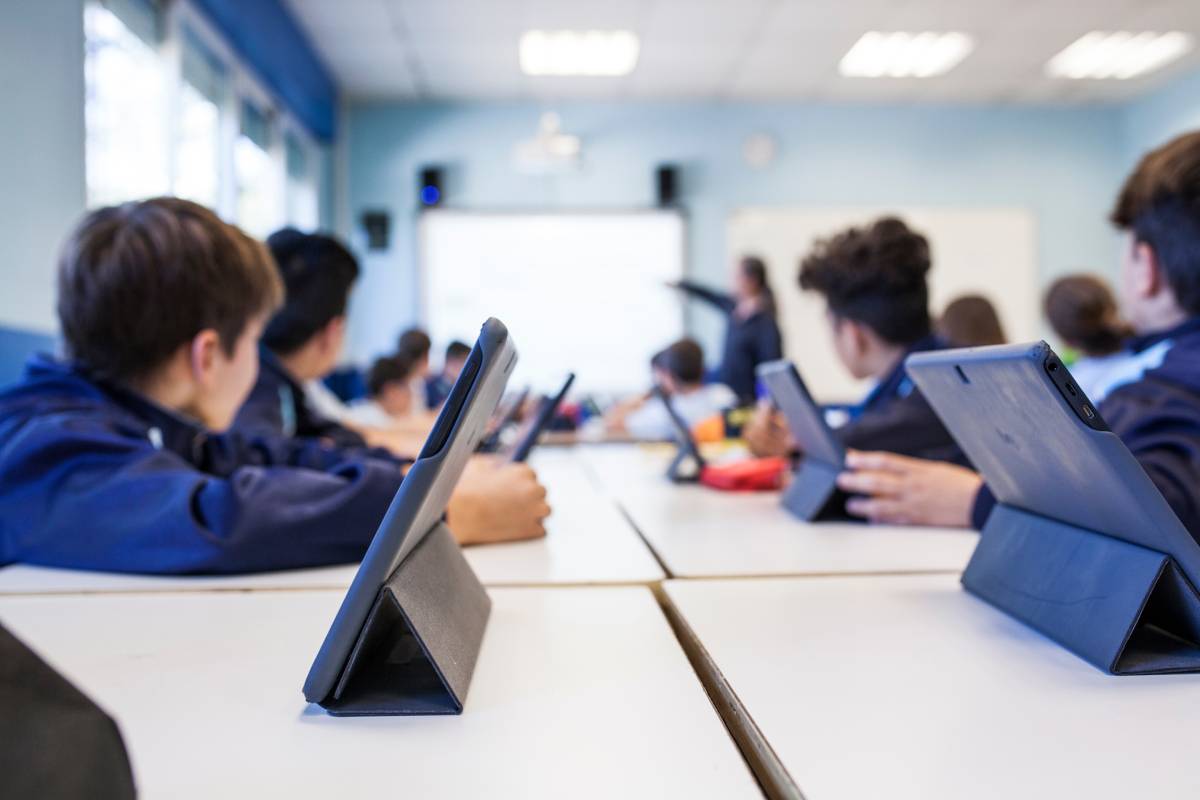Technology has had an enormous impact on every industry over the last decade, including education.
Teachers are now quick to embrace technology’s benefits regarding practicality, reducing workload and improving learning.
In this guide, we will explore some of the ways that technology can help teachers in the classroom.
Interactive Learning
Interactive whiteboards have revolutionised how teachers deliver their lessons. Although teachers may have been slow to embrace the change in the early days, now it is hard to imagine a classroom without one.
The advantage of an interactive whiteboard (IWB) is that it allows teachers to provide multimedia and a dynamic flow to enhance their teaching input. More importantly, it encourages interaction as students can interact with the screen themselves, answering questions and testing their new skills and knowledge.
It could be argued that the IWB is the most significant piece of technology to impact how teachers prepare for lessons and deliver them, and it has changed the landscape of learning in the classroom.
Adaptive Software
Adaptive learning software allows students to learn individually at a pace and level of challenge that suits their abilities.
Teachers can then influence learning further by using the software to provide a targeted approach in the areas needed.
Collaborative Online Platforms
Collaborative platforms allow better communication between students, teachers and parents.
It is the perfect way to ensure students are aware of assignments and homework while teachers can track progress. The ability to communicate directly with parents ensures all stakeholders are kept fully informed about achievements, progress and targets.
For parents who are often working and unavailable, it provides a direct link with the school and ensures they can participate in their child’s education.
The Future of AI
Of course, we can’t discuss technology without acknowledging the recent impact of AI on education.
There are two main areas that AI is already influencing: Managing daily tasks and learning.
It was only today that teachers were discussing on LBC radio how AI had begun to significantly ease the burden of planning and preparation.
AI is a tool that a teacher can interrogate to produce questions for lessons directly related to the skillset being taught. It dramatically reduces the time needed to produce the questions, and the teacher can amend or adapt them to ensure they meet the students’ needs. It can also be used to generate appropriate quizzes.
AI can also have a positive effect on pupil learning in the classroom. It can be used for research and interrogation by pupils, translation and in-depth exploration. Now AI is becoming more consistent and reliable, it can encourage pupils to identify good examples of sentence structure and grammar.
The benefit of AI is that it engages pupils and encourages independent work.
Marking, Data and Feedback
Ask any teacher about their least favourite part of the job, and you can be sure that most will say data and marking. These aspects of the job are time-consuming and onerous.
Fortunately, schools use various software platforms to make the tasks easier. They manage the job of producing data more accurately and efficiently. Often, the software also has the ability to create reports for parents.
Schools can decide upon a format for graphs and reports for governors and senior leaders to track progress and achievement at the click of a button.
Internet, Augmented Reality and Virtual Reality
The internet is like having an entire reference library at your fingertips, which is perfect for both teachers and students.
Digital resources such as videos, games or ebooks can enhance engagement and provide alternatives which make accessibility easier. Often, resources are free and readily available, and they are easily shared.
Augmented reality or virtual reality has brought yet another dimension into the classroom. It enhances cultural capital by providing all students with real-world and global experiences. It is accessible to students with needs and can close the gap for disadvantaged pupils.



